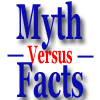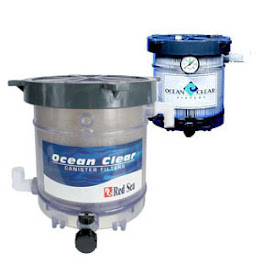Tropical Marine Centre vs Evolution Aqua UV Pond & Aquarium Clarifier Sterilizers
There's been some talk lately of the release of new pond and aquarium UVc clarifier sterilizer tech in the aquatic hobby as of 2023/24. Bringing these advances are the leaders in aquatic UV industry Tropical Marine Centre and Evolution Aqua. Some may know that TMC has been the innovators of UV tech for decades now with coming out of the UK as a professional commercial standard for their UV line.
Before we talk about the new tech, there should be a reminder of why UVc itself is important for aquatic health. I'll touch on this briefly as there's more resources to go into this topic further.
UVc when used properly can either clarify water or reduce algae. It can also be disease prevention with actual sterilization, where bacteria, viruses, and parasites can be controlled. All this with allowing the aquatic water to boost immunity of fish and arguably of invents, corals, and even plants.
Here’s an in-depth resource on sterilization and how it’s been proven to be beneficial:
UV Sterilization Article
Lately both have introduced a new line of Titanium lined chambers allowing for max reflection of UV rays on the outer wall, but also the titanium has a reaction with the UV creating an oxidizing effect with Hydroxyl. This oxidizing Hydroxyl is like Ozone, as an oxidizer to help break down, but is short lived. The free radical is not stable unlike Ozone allowing them to break down quickly and not build up too dangerously in an aquarium or pond.
An ORP meter can be used to measure this effect, but the effects will vary from application to application. We should also remember that UVc itself is a reducer and breaks down oxidizers, so there will be balance between the Hydroxyl and the UVc. Just like an aquarium medication like Eye Fungus where both a oxidizer and reducer are used at the same time, but separately, making an ever effective treatment that's much safer. Balancing oxidizers and reducers in a closed system like an aquarium or pond is known as Redox Potential (ORP) and can be learned in depth here: Redox Potential
So, it's been asked what's the difference between TMC and EvoUv. Both leader manufacturers in the aquatic industry from the UK.
The two lines are true competitors in the UK, with taking very similar approach and tech. The only thing that might make them different is business practices. Tropical Marine Centre has specifically marketed reef keepers, freshwater and pond. Evolution Aqua has focused on pond marketing for their UVs with being a major player in pool applications. They also produce pond clarifiers and other products for other pond and aquarium brands on the US/UK market for affiliates.
What they both have that makes them the highest grade on the market is they both use a high output T8 lamp that connects at both ends of the sterilizer. Having no intensity drop off end to end of the lamp and the fact that the units use a T8 over a T5, means more surface area of zapping power. The T5 that other popular brands use is a much narrower lamp. Both also have a narrow enough chamber to keep the water close to the lamp even on the outer walls of the chamber. Both have a larger chamber unit for pond flows and narrower chambers for aquariums. I'll touch on this again in a minute.
They're both made with high grade PVC for long term exposure to UVc, the sun and rain or moisture. Both have very easily replaceable service parts with professional warranties on the units. Many UVs are marketed as sterilizers when they can only clarify and have 1-3 year lifespans. These professional units last 10years plus and have replaceable parts.
So, both have new technology, but here’s where the two lines differ at this point. Evolution Aqua has not released their Titanium model to the US market yet for the aquarium or pond market. TMC has only the aquarium UVs, but not their pond. As I said before, TMC and EvoAqua both have a marketed pond line of clarifiers and an aquarium line of sterilizers. The difference is that the aquarium units have even more narrow chambers for slower flows, smaller bodies of water for max zap power. The pond line has a bit bigger chamber for higher flows larger application. Due to the professional build of both clarification and sterilization can be set up for the correct applications for both the clarifiers and sterilizers.
So, TMC has the new Titanium tech aquarium sterilizers in the US, with the old pond line. Though there's talk of the new Titanium pond line coming to the US. And there's only the pond line without the Titanium tech from EvoUV where the flow rates have to be adjusted a little compared to the aquarium line. There has not been any talk of bringing the EvoUV aquarium line or the Titanium to the US yet. This comes down to demand, as the electrical rating in the UK is 220v and the US 110v and all units have to be set up correctly for the electrical.
I should mention, that even before the Titanium upgrade was made to the UVs, these designs of UV clarifier sterilizers could achieve the highest level of sterilization for max benefit aquatic water can benefit from. Level 2 sterilization. So, if you’re looking for UV benefits it’s already here. It’s the new oxidizing hydroxyl is what the hobby can decide if they want to explore with their tank.
Only other thing I can think of that may be silly is manufacture packaging. The EvoUV comes with the quartz sleeve and lamp packed sperate in the box. TMC comes all installed. The plug and play of the TMC is very nice, with some assembly required for the EvoUV, but will insure the sterilizer and parts don't damage in transport.
That's all for now, but we'll provide updates as the industry and hobby continues to change. Since there hasn't been much change in UVc for some time and people thinking UVc LEDs were going to be the next step of innovation we thought it was worth sharing about these two aquatic manufacturer leaders.
TMC and EvoUV Product Resource
Labels: Aquarium, clarification, disease prevention, evolution aqua, EvoUV, Pond, sterilization, Titan UV, tropical marine centre

 UV Sterilization in Aquariums and Ponds; How it works
UV Sterilization in Aquariums and Ponds; How it works















 TMC PRO Pond 110 Watt
TMC PRO Pond 110 Watt